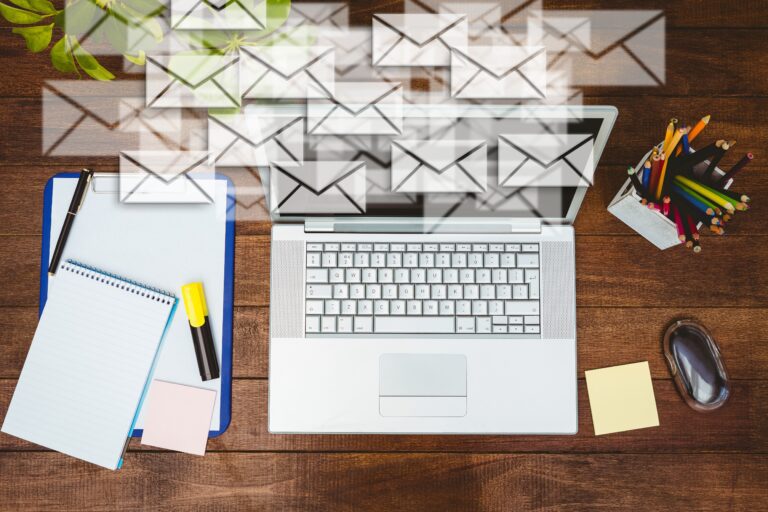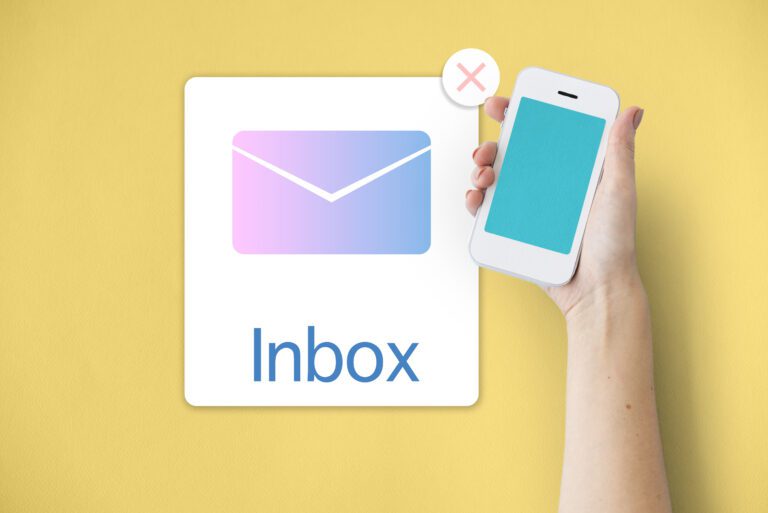Email List Cleaning: Clean Your List Without Losing Conversions

I hope you enjoy this blog post. If you want Hello Bar to grow your leads, click here.
Author:
Ryan Bettencourt
Published
July 23, 2024
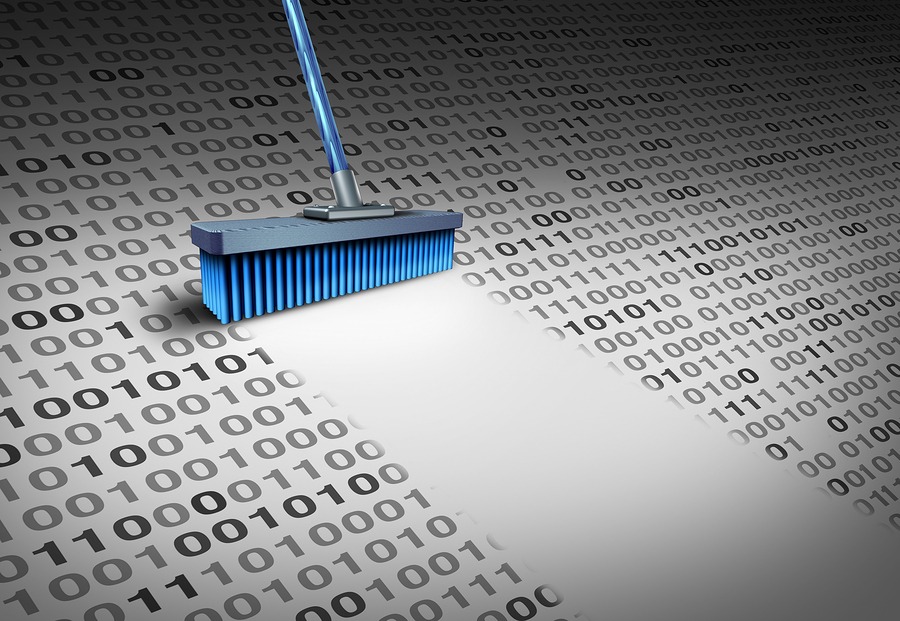
Email list cleaning is a critical yet often misunderstood practice in digital marketing. Many professionals shy away from this essential task, fearing it will erode their hard-earned subscriber base.
The reality is that a well-maintained email list is the cornerstone of effective email marketing. It enhances engagement, driving higher conversion rates and improved deliverability.
Regularly purging inactive subscribers and invalid addresses enables marketers to enhance their campaigns’ quality and boost overall performance.
This article explores email list cleaning, how to approach it, and its benefits. It also provides actionable strategies to refine your subscriber base without sacrificing valuable connections or conversions.
Learn how to leverage this powerful technique to revitalize your email marketing efforts and achieve better results.
How to Build an Email List from Scratch
Email marketing statistics reveal a few interesting truths about how this process works. For one thing, the average open rate is just under 25 percent, and fewer than 5 percent click through on the offer in marketing email.
What do these facts tell you? Email marketing is a numbers game.
Before email list cleaning even comes into the conversation, you need a healthy email list. Learn as much as you can about how to build an email list so you have leads to work with.
It’s easy to learn how to build an email list from scratch. You start with a lead generation tool like Hello Bar.
Create a top bar to invite people to sign up for your email list. It might look something like this:

People can sign up for your email list in exchange for your lead magnet. You could use a discount (like the image above shows), or you could use a checklist or cheat sheet.
These strategies will help you start collecting email addresses. Regular email list cleaning becomes essential to maintain its quality and effectiveness as your list grows.
What Does It Mean to Clean or Scrub an Email List?

Email list cleaning involves removing inactive and inaccurate data from your email marketing database. For instance, this process might include scrubbing your email list of anyone who hasn’t engaged with an email in 90 days.
It’s also an opportunity to remove anyone who has actively unsubscribed from the list. Ideally, you should do this immediately; if not, it’s time to remove those emails.
You can perform the email cleaning process manually or automatically. The latter is often preferred as it’s much faster and more efficient, but more on that later.
What Are the Risks of Not Cleaning Your Email List?
If you don’t clean your email list regularly, it will become inflated. Your goal is to get your target audience to view and engage with your emails. Several things can prevent you from doing this.
For instance, if email clients like Gmail think you’re sending spam, they’ll automatically junk your emails. This happens when people who don’t want to hear from you send your emails to their spam folder, prompting Gmail to label and treat them as junk.
That’s the last thing you want.
Additionally, you risk irritating the audience you’re aiming to engage with your marketing strategies. Why would you continue sending them mail if someone doesn’t want to hear from you?
What Are the Best Benefits of Email List Cleaning?
There are several benefits of email list cleaning that we can explore.
Let’s look at them in detail.
1. Email Scrubbing Will Reduce Your Email Marketing Costs and Increase Your ROI
Email service providers often charge based on the size of your database. You’ll pay more to email 50,000 people than you would to email 5,000 people.
Therefore, cleaning your email list makes sense from a cost perspective. There’s no reason to pay to email people who aren’t actively engaging with your messages.
As a result, you get an ROI boost. Since you’re only sending emails to people interested in what you have to say, you’ll get more opens and click-throughs. It’s a win-win strategy.
2. Email List Cleaning Will Reduce Your Spam Complaints
You do not want your business associated with the word “spam.” Trust us.
Spam complaints get you sent to the email blacklist. It’s hard to recover from, and it’s far more effective to avoid it altogether.
If you’re scrubbing your email list regularly, you can rest assured that your chances of getting spam complaints are fairly low. This means your messages will find their way to where they belong: Leads’ inboxes.
3. Email Scrubbing Will Increase Your Open Rates as Well as Your Click Through Rates
Cleaning your email list can significantly improve your engagement metrics.
Let’s say your current database holds 5,000 email addresses and you have a 20 percent open rate. That’s not bad.
But then you clean your email list. It reduces your database to 4,200 email addresses, but your open rate shoots up to 30 percent. Much better!
4. Email List Cleaning Will Enhance Email Deliverability and Sender Reputation
Maintaining a clean email list guarantees your emails reach valid and active inboxes. This improves your deliverability rates.
Internet Service Providers (ISPs) and email clients monitor your emails’ bounce rates and engagement levels. Lower bounce rates and higher engagement levels enhance your sender reputation.
They signal to ISPs that your emails are valuable and desired by recipients, resulting in better inbox placement. It also helps your messages reach their intended audience more consistently.
5. Email Scrubbing Will Provide More Accurate Data and Insights
Your analytics are more accurate with a clean email list. Inactive or unengaged subscribers don’t skew your data.
You can use these analytics to make informed decisions about your email marketing strategies. It also allows you to tailor content more effectively and identify areas for improvement.
The result is more targeted campaigns that resonate with your audience and yield higher email engagement rates.
How Do You Know It’s Time to Scrub Your List?

Regular email list cleaning is essential to maintain an effective email marketing strategy. Weekly scrubbing may be necessary for large, rapidly growing lists to maintain optimal performance.
You probably won’t have to clean your list as often.
A good practice is to clean your email list every three months to start. Think of it as a quarterly maintenance task. As you grow your email list, shorten the intervals between scrubbings to keep up with the increase in volume.
Warning Signs You Should Clean Your Email List
In addition to setting specific timeframes for email list cleaning, you should also watch out for red flags indicating your list is inflated. The following are three major warning signs that signal scrubbing.
1. Your Open Rates Are Lower Than Ever
Some businesses don’t even track open rates. Hopefully, you’re not one of them.
A low open rate suggests that many of your subscribers might not be interested in your marketing messages. They might have gone with a competitor, already bought your product, or phased out of the need for your service.
The reason doesn’t matter because you can’t control it. However, you can eliminate any fallout by cleaning your email list.
2. Your Emails’ CTR (Click-Through Rate) Is Also Much Lower Than Usual
Click-through rate measures the percentage of subscribers who click on the CTA in your email. If your CTR falls precipitously, you’re walking a dangerous line.
As mentioned above, CTR will almost always be much lower than the open rate. People often read emails without further engaging with them.
However, if you see a big drop, that’s a red flag. Email list cleaning could improve your CTR and increase engagement.
3. Your Are Getting a Lot of Spam Complaints and Your Bounce Rate Is Also High
Recipients can do two things with an unwanted email: trash it or send it to the spam folder. The latter is the most dangerous for your business and brand.
When disengaged or inactive subscribers send your emails to spam, they send a message to their email clients: “This message is unwanted and unsolicited.”
The email client pays attention to spam complaints. Your emails will automatically get sent to spam if you reach a certain threshold.
Pay close attention to email bounces if you reach a certain threshold. If an email comes back as undelivered, there’s likely a problem with the address itself or the owner’s email client.
How Often Should You Clean Your Email Lists?
The answer is: As often as you can.
You can start at three months, but if you have a large list and you’ve never done an email list cleaning, now’s the time to start one.
The faster your list grows, the more frequently you need to clean it.
Before You Start Cleaning Your List, Check for Hard and Soft Bounces
There are two types of bounces in email marketing: soft and hard.
- A soft bounce indicates a temporary deliverability issue. Your email service should attempt to send the email again, and it will most likely go through.
- Hard bounces, however, are bounces that never go through. The email address is wrong, the domain no longer exists, or the email server has blocked delivery.
Many email service providers will automatically clean hard bounces. Others force you to initiate email list cleaning to get rid of addresses.
Send a Re-engagement Email Campaign Targeting Inactive Subscribers
Before an email list cleaning, you can segment out any subscribers who have become inactive. They aren’t opening or engaging with your emails, but they did at one time.
Send them a re-engagement email drip campaign to bring them back. In the first email, ask if they still want to hear from you.
Allowing them to click either the yes or no buttons simplifies the process.
Remove subscribers who click “no” and entice those who click “yes” back to your business by providing valuable information, incentives, and discounts. Nurture them back into the funnel so they’re more likely to convert later.
Best Tips to Clean or Scrub an Email List
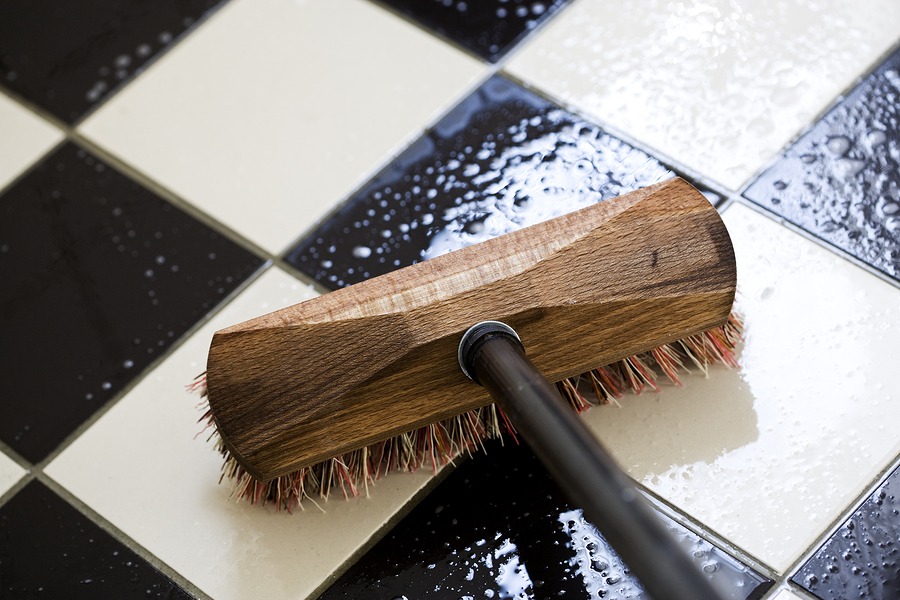
If you’ve never tried email list cleaning, there’s no time like the present. We’ve compiled my best tips for ensuring you do a thorough job.
1. Start Scrubbing Your Most Active Email Lists – But Do Not Forget Your Other Lists
Always begin with your active lists — the ones that hear from you regularly. If you’ve taken our advice and segmented your list, you might have several distinct lists, so work through them systematically.
2. Start Cleaning Duplicate Email Addresses
People often forget they’ve signed up for an email list. Then, upon reencountering the website in the future, they sign up for a second time.
Remember what we said about ROI? Duplicate email addresses reduce your ROI. Remove the duplicates so you’re not sending double messages and your email list doesn’t remain oversized.
3. Find “Spammy” Email Addresses and Remove Them from Your Email List
You probably know how to identify a spammy email address by now. Even as a consumer, you likely receive many emails from bogus addresses.
The following random, imaginary examples offer some insight:
- mb2kl6v1f2@gmail.com
- apple@apple.com
- guess@aol.com
You don’t have to do this manually, though, as we’ll discuss later. Automatically removing spammy or fake email addresses can make email list cleaning far more efficient.
4. Remove People Who Unsubscribe from Your Email List
This is a biggie. If someone tells you they don’t want to hear from you, honor that request ASAP.
It’s like those annoying telemarketing calls. You’ve told them you don’t want them to call, but they do it anyway.
Will you ever buy a product associated with that telemarketing call? Absolutely not. Even if you decide you’d love the product and would pay millions of dollars for it, your principles might keep you from putting down money.
People feel the same way about emails that come unsolicited from a business.
5. Correct Obvious Typos
You can often find typos manually in your email list if it’s short enough. For instance, correcting @gmial.com to @gmail.com is simple enough. Same for @outlok.com to @outlook.com.
How to Manage and Engage Your Cleaned Email List
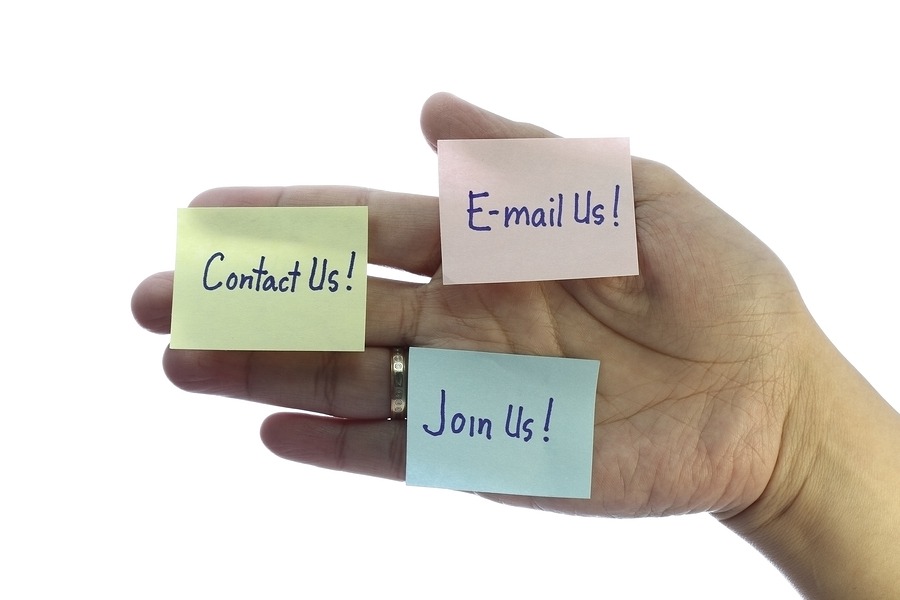
Now that you know why email list cleaning is important, let’s discuss how to run a clean email list from the beginning. The harder you work from the outset, the cleaner your list becomes.
1. Use Hello Bar + an Awesome Lead Magnet to Turn Your Website Visitors Into New Engaged Leads
Begin with an excellent lead generation strategy. Bring in people who legitimately want to hear from you by presenting an obvious offer and making it compelling.
Use Hello Bar to create an exit intent popup — also called a page takeover. It takes less than five minutes to set one up.
Add your lead magnet to the headline and include a positive, exciting CTA.
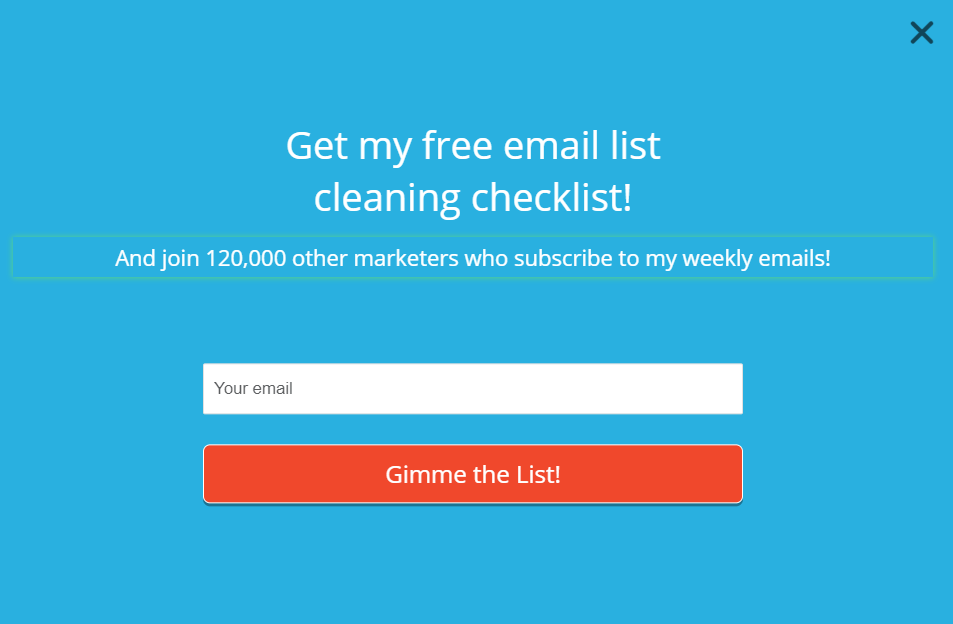 ’
’
This is a great way to engage exiting visitors who might want to hear from you in the future — and download your awesome lead magnet. If you already have a sizeable list, mention it as social proof.
2. Always Send Welcome Emails to Your New Email List Subscribers
The honeymoon phase with your new subscribers is precious. Everything feels fresh and exciting, and their inboxes are wide open to your messages.
Capitalize on this enthusiasm by sending captivating welcome emails that make them feel valued and secure. Consider offering an exclusive discount or bonus content as an incentive to further sweeten the deal.
Most importantly, prioritize building a two-way street of communication. Encourage subscribers to reply directly to your emails, follow you on social media for updates, and explore your blog for valuable information.
This early engagement sets the stage for a long-lasting and mutually beneficial relationship.
3. Use the Right Email Copywriting Techniques to Keep Your Email List Engaged
Email copywriting is underrated. Many believe they can simply use casual language or “textspeak” and expect positive responses from subscribers.
It doesn’t work that way.
In fact, your emails might be the first impression your leads get of your business. Sure, they visited your website and signed up, but it might be days before they open the email. Now, they’re looking at you with fresh and critical eyes.
Don’t disappoint them. Write in complete sentences, use an active voice, and keep your messages short and sweet.
4. Do Not Overlook Your Email Subject Lines – Use Catchy Email Subject Lines
The best email subject lines compel your subscribers to open their emails. They leave little choice because they’re so inviting. To achieve this, you have to get creative.
Use unusual language, active verbs, and hints of incentives to pique curiosity and encourage engagement. Test different subject lines by segmenting your lists and comparing open rates. The results might surprise you and unlock a goldmine of engagement potential.
5. Create Awesome Automated Email Drip Campaigns to Nurture Your Email Leads
It’s also a good idea to funnel your new and active subscribers into email drip campaigns. Pinpoint their position in the sales funnel, then send them messages that resonate with their needs.
Best Practices for Maintaining a Healthy Email List
Regular email list cleaning is essential because a healthy email list is the lifeblood of successful email marketing campaigns. You can also implement additional practices to prevent your list from becoming cluttered.
Here are some key practices to keep your email list clean and engaged:
1. Implement Double Opt-In
A double opt-in method is one of the best ways to ensure you only add interested and engaged subscribers to your list. When a user subscribes to your email list, send a confirmation email that requires them to verify their subscription.
This extra step helps filter out fake or invalid email addresses and ensures that your email subscribers are genuinely interested in receiving your content.
2. Make Unsubscribing Easy
While it may seem counterintuitive, making it simple for recipients to unsubscribe benefits your email list health. So, include a clear, easily accessible unsubscribe link in every email.
This practice complies with anti-spam laws and allows uninterested subscribers to remove themselves, naturally cleaning your list.
When it’s challenging for users to unsubscribe, it can lead to frustration and result in them marking your emails as spam. This, in turn, can harm your sender reputation.
3. Improve Segmentation
Effective segmentation allows you to tailor your emails to different groups within your email list. You can send more targeted, relevant content when you segment subscribers based on demographics, behaviors, or preferences.
Segmenting increases user engagement and reduces the likelihood of subscribers becoming inactive. Regularly analyze your segments and adjust them based on engagement metrics to ensure your emails resonate with each group.
4. Regularly Verify Emails
Over time, email addresses can become invalid due to changes in subscriber preferences or errors.
Regularly verify emails in bulk to ensure that your list contains active and valid email addresses. To do this, you can use an email verification service to check for syntax errors, domain validity, and mailbox existence.
Proactively identifying and removing invalid email addresses helps prevent email bounces and deliverability issues. It also helps maintain a cleaner list.
5. Keep Re-engaging Your Audience
Don’t wait for subscribers to become inactive before taking action.
Periodically send re-engagement campaigns to identify and reconnect with subscribers who haven’t opened your emails recently. Offer exclusive deals, content, discounts, or polls to entice them to re-engage with your brand.
Re-engagement efforts help weed out truly inactive subscribers before they negatively impact your list hygiene and email deliverability.
3 Email Verification Services
Email validation service automatically cleans every subscriber who provides you with an email address. This is a great way to get started on the right foot and to make email list cleaning easier in the future. Following are three services you might consider.
Pabbly Email Verification
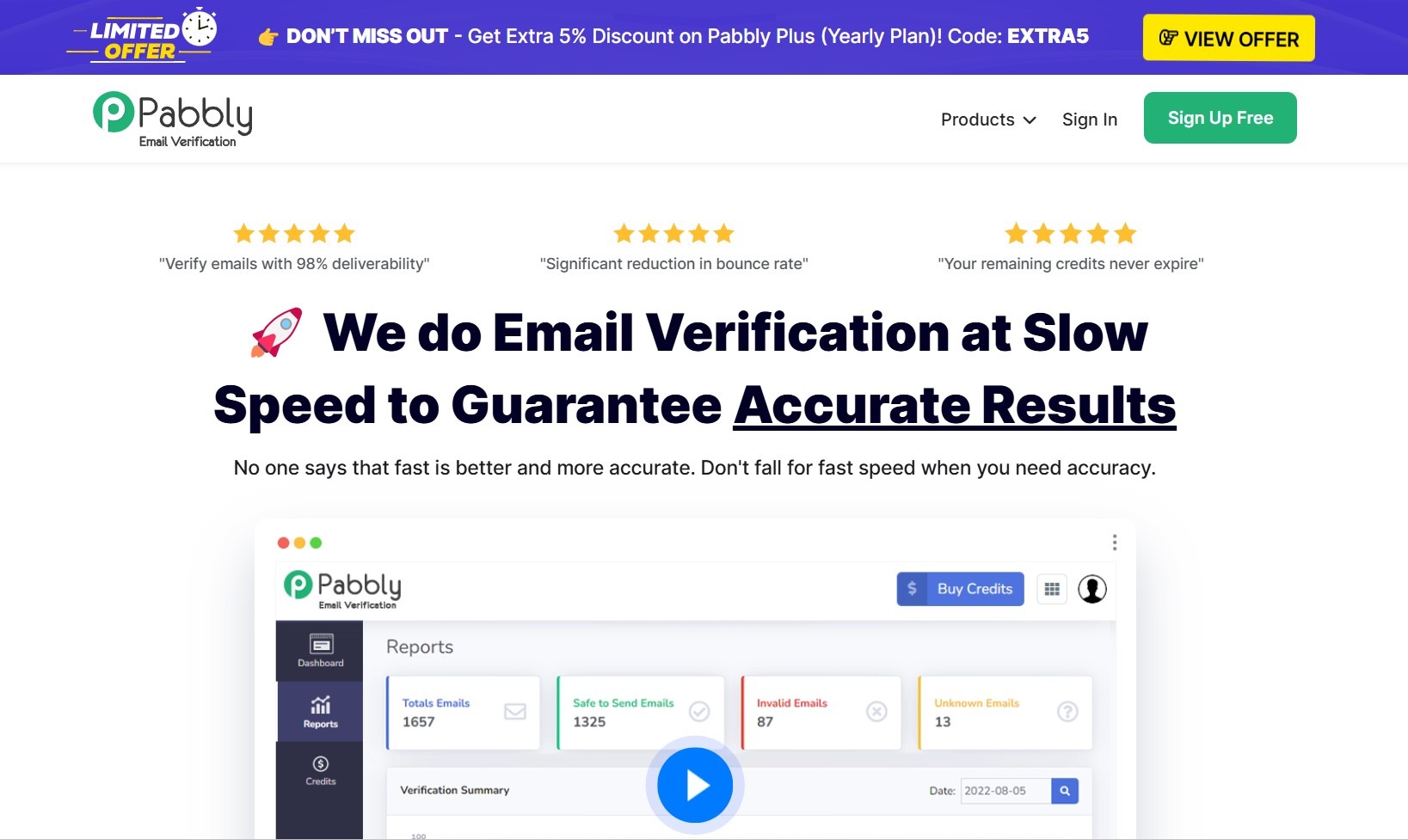
Image via Pabbly
Claims 99 percent accuracy. Pabbly Email Verification (formerly Mailget List Cleaning) allows you to upload your list and get it cleaned and verified by clicking a single button.
The cost varies based on the size of your list. At the time of this writing, a list containing 1,000 subscribers will cost just $5 to verify. The scale goes up to 10 million, which costs $2,999. You have to contact support if your list has over 10 million subscribers.
Xverify Intelligent Email Verification
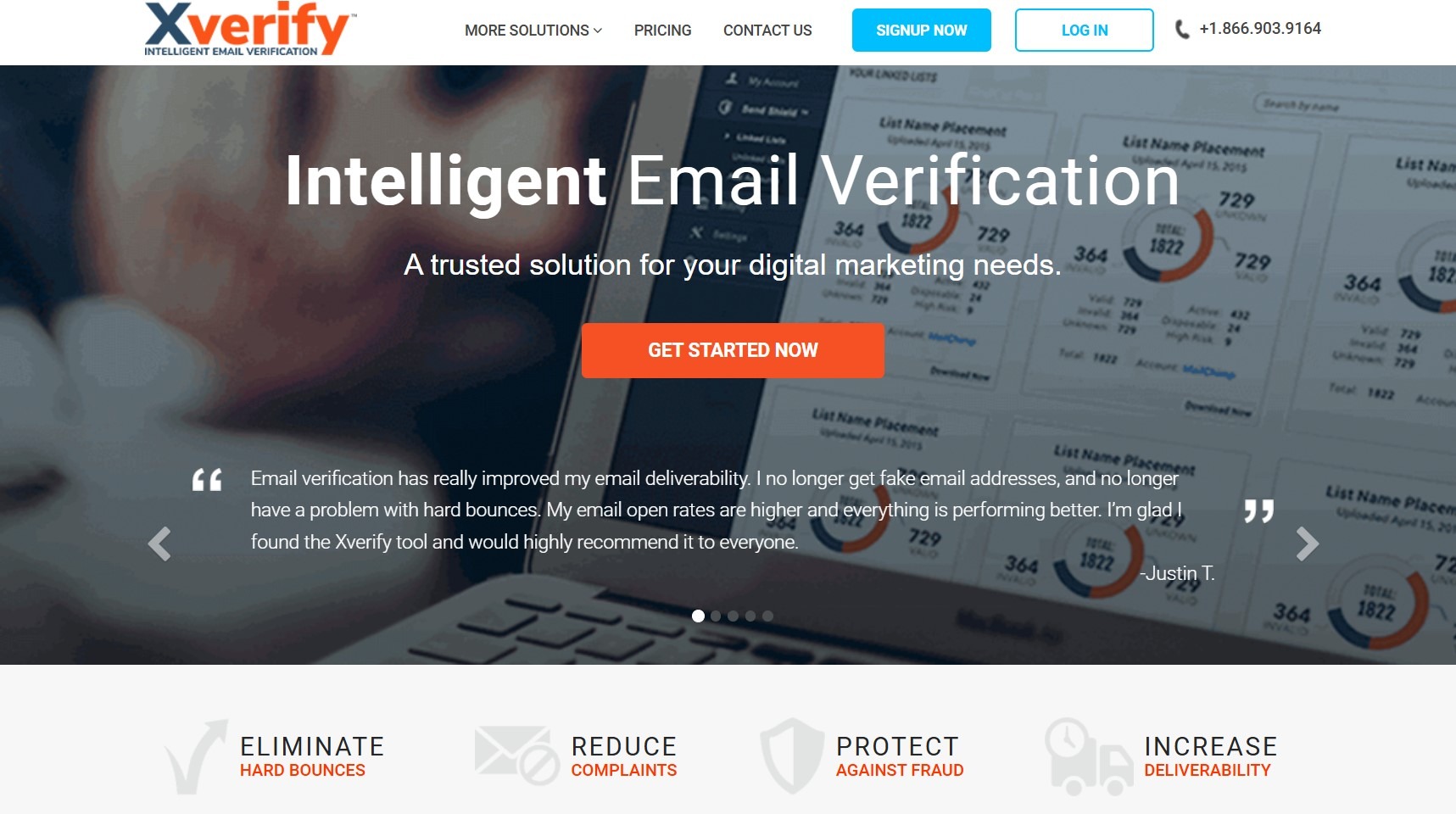
Image via Xverify
Xverify is intensely security-focused. It wants to protect its customers and produce clean, problem-free email lists. Email list cleaning costs anywhere from $5 for 500 email addresses to $2,500 for 2.5 million addresses. Custom pricing is available for more.
The company doesn’t impose any minimum requirements or setup fees, which is definitely a plus. It also has many trust badges and testimonials, which suggests customers are happy with the service.
QuickEmailVerification
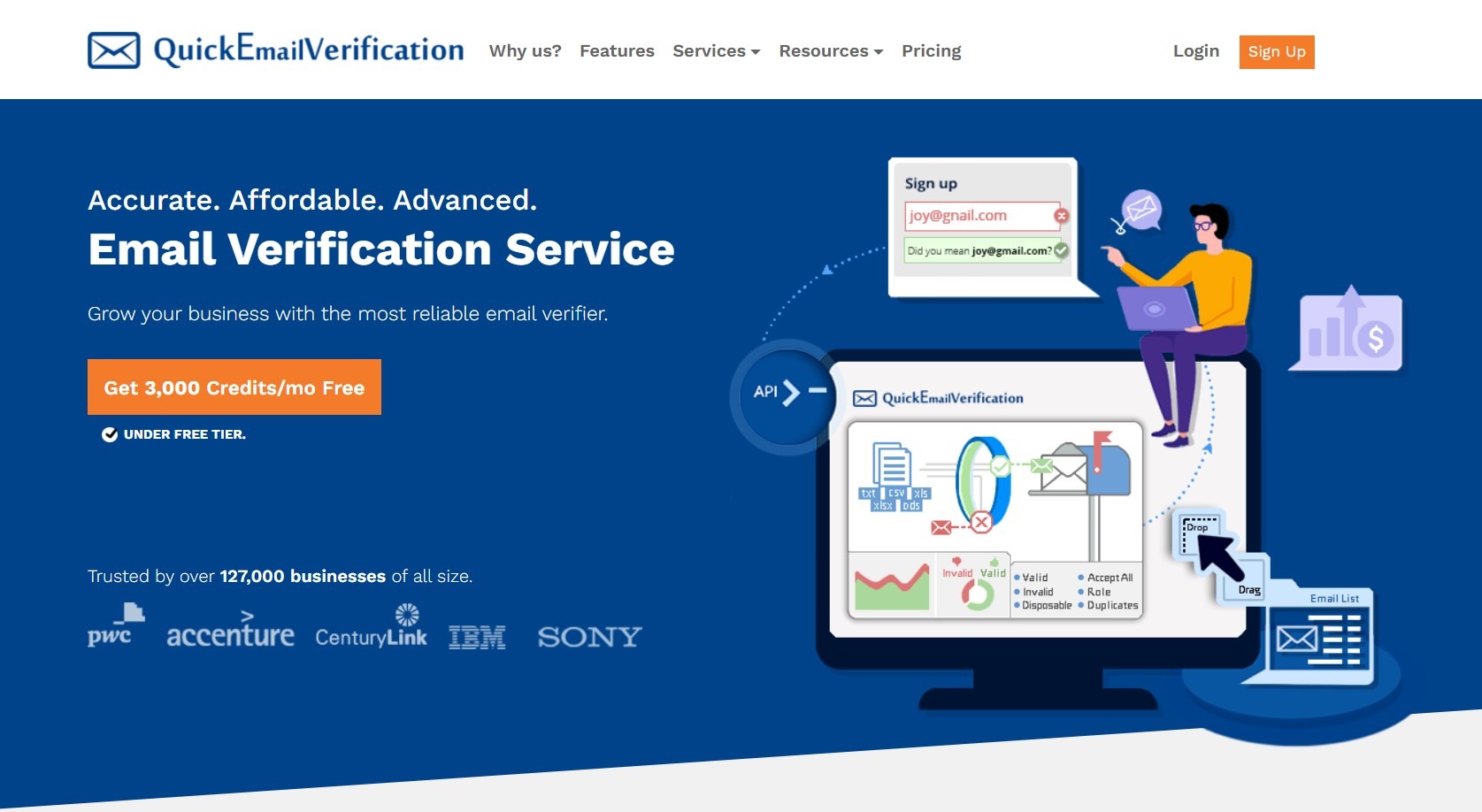
This one is a little different. Theoretically, you can use QuickEmailVerification for free. You just have to verify your email list in 100-address chunks every day. But if you want to verify your whole list, you’ll pay anywhere from $4 to $3,500. Custom pricing for high-volume use is also available.
However, the company operates on a credit basis. In other words, you buy credits to use toward email list cleaning. Your credits carry over if you don’t use them all, and you can buy one-time or daily credits, depending on your needs.
FAQs
Q1. How much does it cost to clean an email list?
The cost of email list cleaning varies based on the size of your list and your chosen service provider. Prices typically range from $4 to $10 per thousand emails, with some providers offering monthly subscriptions or pay-as-you-go options. Bulk pricing discounts also make it more economical to clean more extensive lists.
Q2. What is a cleaned email list?
A cleaned email list is an email list that has undergone thorough scrubbing of invalid, inactive, or unengaged email addresses. Cleaning an email list involves eliminating duplicate entries, correcting syntax errors, and removing bounced emails.
The result is a high-quality list of active and interested subscribers, which forms the basis for more effective email marketing campaigns. There’s improved deliverability and engagement rates as emails are sent only to active and valid recipients.
Q3. Should I clean up my email list?
Yes, you should. Cleaning up your email list is essential for maintaining email list hygiene. It helps improve deliverability, reduces email bounce rate, and ensures you communicate with an engaged audience. Moreover, it can lead to cost savings and better overall performance metrics.
Q4. How often should I clean up my email list?
The frequency of email list cleaning depends on how often you send emails and how quickly your list grows. A good rule of thumb is to clean your email list every three to six months to maintain a high-quality list.
Q5. How do email list cleaners work?
Email list cleaners use various techniques to verify and validate email addresses. These typically include:
- Removing duplicate entries
- Syntax checking to identify formatting errors
- Domain verification to ensure the email domain exists
- Mailbox verification to confirm the specific address is active
- Identifying and removing role-based emails (e.g., info@, admin@)
- Checking against known spam traps or complainers
These tools automate the process of email list cleaning, saving time and improving accuracy compared to manual methods.
Conclusion
Email list cleaning is essential for maintaining a healthy and effective email marketing strategy.
Marketers can significantly improve deliverability, boost engagement rates, and enhance cost efficiency by regularly removing inactive subscribers and invalid addresses.
A clean list leads to more accurate analytics and enables better personalization through effective segmentation. You can start with a semi-annual cleaning schedule and adjust as needed to achieve these results.
Remember, a focused, engaged list is far more valuable than a large, unresponsive one. Therefore, integrate regular list cleaning into your email marketing routine to optimize your campaigns and maximize ROI.
How often do you scrub your email list?


